Australia So Much to See


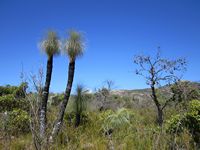
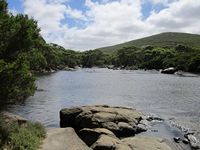
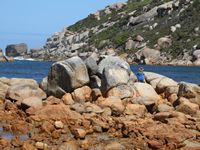
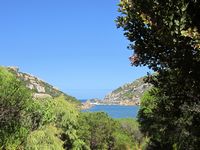
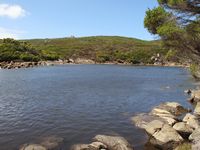
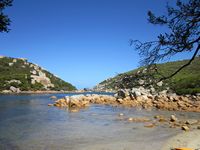
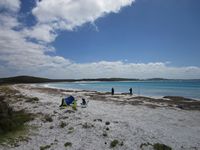
Waychinicup National Park and Cheynes Beach
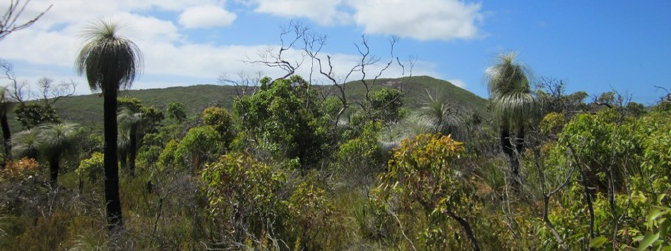
The Waychinicup River is only ten kilometres long with the river itself rising in the Cheynes Road Nature Reserve and joined by a number of contributory creeks. The Waychinicup rivermouth into the wild Southern Ocean between two rocky headlands is permanently open. Most inlets and estuaries along the south coast are blocked by sandbars for decades, and only forced open in times of flooding. The Waychinicup coastline is dominated by cone shaped light grey Granite and Gneiss rocks which are particularly prominent on the hill tops like castles overlooking the sea. Grass trees dominate the scrublands.
Waychinicup and Mount Manypeaks Nature Reserve provides a home for the threatened bird species found only in the Albany area; Western Whipbird, Western Bristlebird, and the previously thought extinct Noisy Scrub-bird has been breeding successfully since the reintroduction from the colony discovered at Two Peoples Bay.
The endangered Western Ground Parrot has only rarely been seen in the park, but volunteers believe they have heard its call. The western ground parrot is one of the rarest bird species in the world. The bird is so rare, that the first known photograph of it taken in the wild was in 2004.
Mammals include nocturnal species of Quenda (Southern Brown Bandicoot), Mardoo (Yellow footed), and Western Ringtail Possum. Quokkas may be seen in the day time. Other mammals you may see include Honey Possum, Grey Bellied Dunnart, Western Brush Wallaby, Western Grey Kangaroo and the Brush Rat.
Nearby Mount Manypeaks rises to 565 metres. The Mount Manypeaks Nature reserve provides a habitat for over half the Noisy Scrub-birds known to exist. Half of the population was killed during the 2005 fire.
Distinctive tall slender grass trees are silhouetted against hills with rounded granite outcrops (top left).
The river estuary
looking upstream (above left) and towards the coast (left).
The inlet (below) is fed from the river estuary and being open to the sea is subject to tides.
Cheynes Beach caravan park and settlement consisting of fishing cottages and holiday homes is almost enclosed by parts of Waychinicup National Park. Since our previous visit in 2005, two streets of new houses had been built along the bay.
Soon after the official settlement of Albany in 1826, some of the settlers set up whaling stations at a few sheltered beaches, mainly to the east of the town, and this included Cheynes Beach.
Cheynes Beach
The Whaling Station was first intended to be built at Cheynes Beach, Western Australia – hence the registered name of the company. The site became available in King George Sound when the Albany Whaling Company closed down. It had many advantages over Cheynes Beach so the lease was taken up on the present site in 1949.